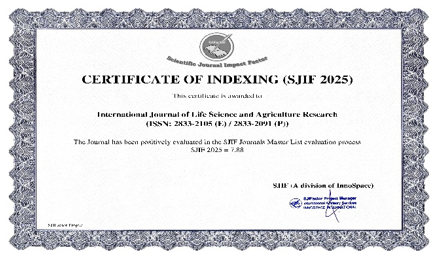Diversity of Soil Physical Properties of Andisols in Toposequence Results from the Eruption of Mount Tangkuban Parahu in Sukawana Tea Plantation
DOI:
https://doi.org/10.55677/ijlsar/V03I8Y2024-02Keywords:
slope, topography, toposequenceAbstract
Topography is one of the soil forming factors that affect soil properties and crop productivity. Soil properties that affect crop productivity include soil physical properties. The purpose of this research was to identify the characteristics of soil physical properties including permeability, bulk density, and soil porosity at various slope positions and identify the effect of slope position on soil physical properties. This research was conducted on a toposekuen located in Sukawana Tea Plantation which has an undulating to hilly topography with a slope of 25 - 45%. This research was conducted in May - July 2024. The research method used was comparative descriptive survey method based on direct observation in the field and continued with F-test to see the effect of slope position on soil physical properties with DMRT further test. Soil samples were taken as many as three replicates on each slope position (top, middle slope, lower slope). The results showed that the slope position did not significantly affect the permeability, bulk density, and porosity of the soil.
References
Asdak, C. 2002. Hidrologi dan Pengelolaan Daerah Aliran Sungai. Gajah Mada University Press, Yogyakarta.
Delmelle, P., Opfergelt, S., Cornelis, J.-T., & Ping, C.-L. 2015. Volcanic Soils. In H. Sigurdsson (Ed.), The Encyclopedia of Volcanoes (Second Edition) (pp. 1253 1264). Academic Press. https://doi.org/10.1016/B978-0-12-385938-9.00072-9
Hardjowigeno S. 2003. Ilmu Tanah. Jakarta: Penerbit Akademika Pressindo.
Hardjowigeno, S. 2007. Ilmu Tanah. Jakarta: Akademika Pressindo.
Kartadinata, M. N., Okuno, M., Nakamura, T., & Kobayashi, T. 2002. Eruptive History of Tangkuban Parahu Volcano, West Java, Indonesia:
Omokaro, G. O. (2023). A Review on the Impacts of Toposequence on Soil Properties. American Journal of Environment and Climate, 2(3), 114–120. https://doi.org/10.54536/ajec.v2i3.2209
Putri, A.M., Y. Adinegoro. 2020. Mekanika Tanah I. Penerbit Kita Menulis.
Suriadikusumah, dkk. 2014. Pengaruh kemiringan lereng dan penggunaan lahan terhadap beberapa sifat fisika tanah di Sub-DAS Cikapundung Hulu. Soilrens, 12(1), 23-3












